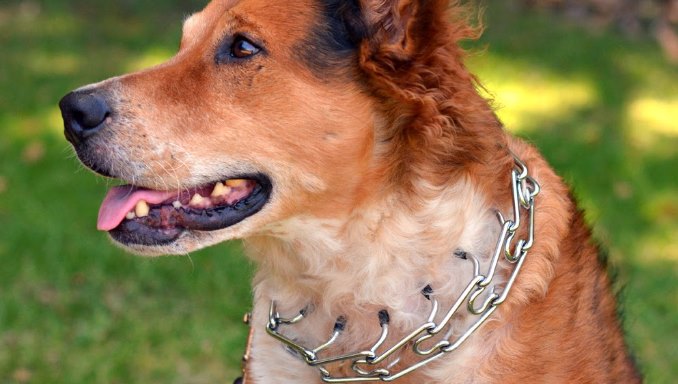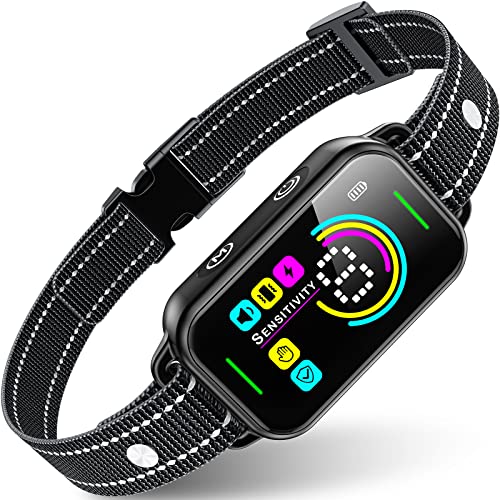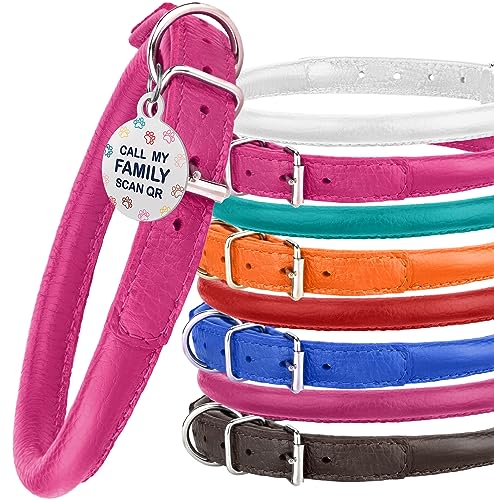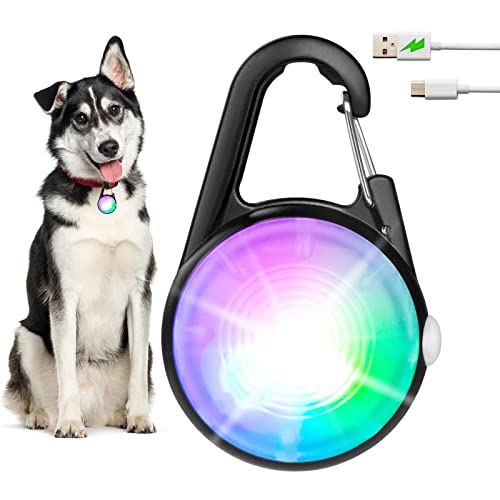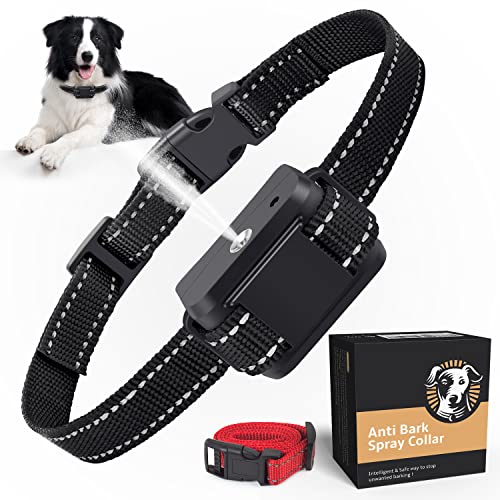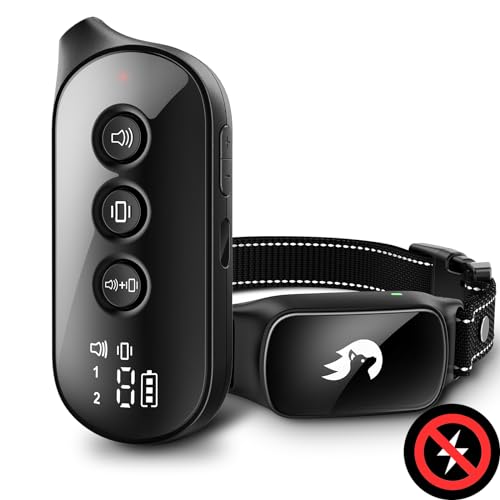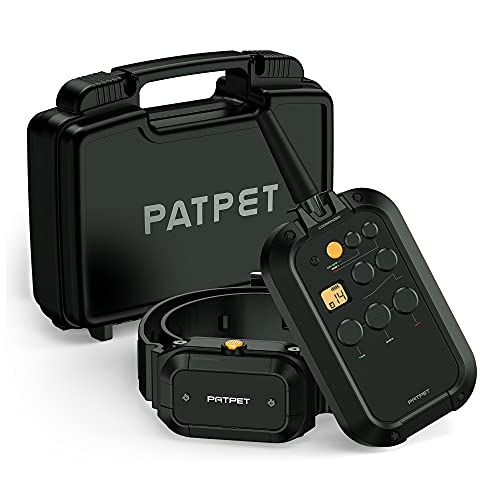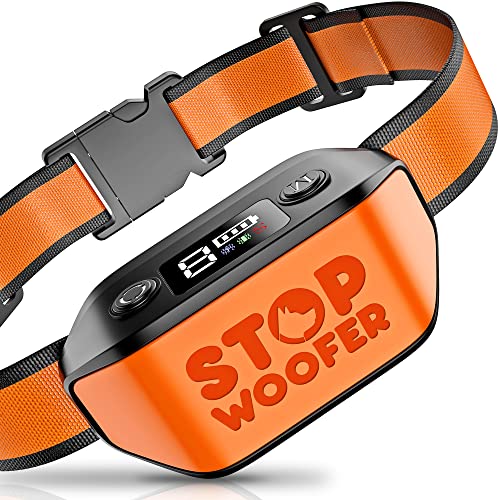Prong Collar vs Choke Collar
Whenever you take your dog for a walk, there are two pieces of equipment that are essential: a leash and a collar. Walking a dog on a leash is a great way to get some exercise and enjoy the outdoors, but it’s important to choose the right type of leash and collar for your dog. Inappropriate leashes and collars can cause discomfort or even injury to your dog.
There seems to be a lot of confusion when it comes to choosing the right type of dog collar. In this blog post, we will compare the two most popular types of collars – the prong collar vs choke collar. Some pet owners may not be sure which one is better for their dog. We will look at the pros and cons of each type of collar and help you decide which is the best option for your pet.
Pinch collars and choke collars are the two most common types of dog collars used by professional dog trainers. Pinch collars are also known as prong collars, and they work by delivering a quick pinch to the dog’s neck when the animal pulls on the leash. Choke collars work in a similar way, except that they tighten around the dog’s neck when the animal pulls, cutting off its air supply. Both types of collars are considered controversial by some people, but they can be effective if used correctly.
In the section below, we will also help you understand how to use each type of collar correctly and safely. We will also share some tips on choosing the right size of collar for your dog. I will now dive into the topic of “prong collar vs choke collar” to help you better understand these two types of collars as well as make a decision which one is better for your dog. So, let’s get started!
What Is Prong Collar for Dogs?
A prong collar is a dog training collar that consists of metal spikes that point inwards towards the dog’s neck. Prong collars are also sometimes called pinch collars, and they are designed to provide a negative reinforcement stimulus when the dog misbehaves. The theory behind using a prong collar is that the pain caused by the spikes will deter the dog from repeating the behavior that resulted in the collar being activated.
Prong collars are not recommended for every dog, and they should only be used under the supervision of a qualified professional trainer or behaviorist. Prong collars should also be used with caution on small dogs and puppies, as they can easily be injured by the spikes. If you are considering using a prong collar on your dog, be sure to consult with a professional trainer first to see if it is an appropriate training tool for your dog’s individual needs.
What Are The Benefits Of A Prong Collar?
Prong collars can be effective in deterring certain types of dog behavior, such as pulling on the leash, jumping up on people, and darting into traffic. When used correctly, prong collars can provide a quick and effective way to teach your dog not to engage in these dangerous behaviors.
Prong collars can also be helpful in situations where other types of training collars, such as choke chains or slip leads, are not effective. Dogs that are resistant to the corrections provided by these other collars may be more responsive to the stimulus provided by a prong collar.
What Are The Risks Of Using A Prong Collar?
There are some risks associated with using prong collars on dogs, and these should be considered before decide to use one on your dog. Prong collars can cause pain and discomfort to dogs, and they can also lead to injury if not used properly.
Dogs that are wearing prong collars should never be left unsupervised, as they may injure themselves or others if they play too roughly. Prong collars should also be removed when the dog is not being trained, as leaving them on for extended periods of time can cause skin irritation.
How Do I Use A Prong Collar Correctly?
If you decide to use a prong collar on your dog, it is important that you use it correctly in order to avoid causing any harm. Prong collars should only be used under the supervision of a qualified professional trainer or behaviorist, as they can be dangerous if not used properly.
When putting a prong collar on your dog, be sure to fit it correctly so that it is snug but not too tight. The spikes on the collar should point inwards towards the dog’s neck, and the collar should not be able to slide over the dog’s head.
Once the prong collar is fitted correctly, you will need to attach it to a leash and begin training your dog. It is important to start with short training sessions and gradually increase the duration as your dog becomes more comfortable with the collar.
If you use a prong collar correctly, it can be an effective training tool. However, it is important to remember that these collars can cause pain and discomfort to dogs, so they should only be used under the supervision of a qualified professional.
| [amazon box=”B0B6WVXZ1M” template=”horizontal” tracking_id=”vetranch-20″] |
What Are The Alternatives To Prong Collars?
If you are not comfortable with the idea of using a prong collar on your dog, there are some alternatives that you can try. These include choke chains, slip leads, and head halters.
Choke chains are collars that tighten around the dog’s neck when they are pulled on. They can be effective in deterring pulling behavior, but they can also cause pain and discomfort if not used properly.
Slip leads are collars that tighten when the dog tries to pull away. They can be less painful than choke chains, but they can still cause discomfort if not used correctly.
Head halters are devices that fit around the dog’s head and muzzle. They provide gentle pressure when the dog pulls, which can be helpful in deterring pulling behavior.
When used correctly, all of these training collars can be effective in deterring certain types of dog behavior. However, it is important to consult with a qualified professional before using any of these devices, as they can all cause pain and discomfort if not used properly.
What Is Choke Collar for Dogs?
A choke collar is one type of dog collar that is designed to tighten around the neck of a dog when pulled on. The idea behind using a choke collar is that it will provide a corrective action for a dog that is pulling on its leash, helping to train the animal not to do this behavior. Choke collars are also sometimes called “slip collars” or “check collars.”
There are a few different ways that choke collars can be used. One is to put the collar on the dog and then tighten it until it is snug, but not too tight, around the neck. This should be done gradually so that the dog does not become uncomfortable. Another way to use a choke collar is to put it on the dog and then let it hang loose. When the dog starts to pull, the slack in the collar will tighten and provide a corrective action.
Choke collars are also sometimes used as a training tool, although this is controversial. Some people believe that choke collars can be helpful in teaching a dog not to pull on the leash, for example. Others believe that choke collars are cruel and can cause injury to a dog’s neck.
Choke collars should only be used under the supervision of a trained professional, such as a veterinarian or an animal behaviorist. It is important to make sure that the collar is not too tight, as this can cause injury to the dog. It is also important to ensure that the dog is not left unattended while wearing a choke collar.
Some people are opposed to the use of choke collars, believing that they are inhumane. However, when used properly, they can be an effective training tool.
We already have an article about choke collars, you can read more here: Are Slip Leads Cruel? Are They Dangerous For Dogs?
| [amazon box=”B07R6N6J1F” template=”horizontal” tracking_id=”vetranch-20″] |
Prong Collar vs Choke Collar: Which Is Better For Training Your Dog?
There are a couple different types of dog collars out there, and each has its own purpose. But when it comes to training your dog, you might be wondering which type of collar is best: a prong collar or a choke collar?
Prong collars, also called pinch collars, have metal spikes that protrude from the inside of the collar. When the spikes dig into your dog’s skin, it causes a sensation that is similar to getting pinched. The spikes are designed to dig into the dog’s skin when pulled on, which is meant to serve as a deterrent for bad behavior. Prong collars are also known as pinch collars because of how they work.
Choke collars, on the other hand, are made of a loop of metal or nylon that tightens around your dog’s neck when pulled. Choke collars are also known as slip collars because of how they work. This can cause your dog to choke or gag, which is why it’s important to use them properly.
The debate between prong collars and choke collars has been going on for years. There is no right or wrong answer, as both types of collars can be effective when used properly. However, there are some pros and cons that you should be aware of before making a decision.
So, which type of collar is best for training your dog? Here are some pros and cons of each:
PRONG COLLARS:
1. Prong collars can be an effective way to train your dog. If used correctly, they can help your dog learn obedience commands and correct behavioral problems.
2. Prong collars are less likely to cause injury to your dog than choke collars. If used properly, prong collars will not damage your dog’s trachea or esophagus.
3. Prong collars are less likely to cause psychological harm to your dog than choke collars. If used properly, prong collars will not cause your dog to feel anxious, stressed, or fearful.
Cons:
1. Prong collars can be dangerous if used improperly. If the collar is not fitted properly, it can slip off and get entangled around your dog’s neck, which can lead to choking or strangulation.
2. Prong collars can be painful for your dog. If the prongs are too tight, they can dig into your dog’s skin and cause discomfort.
3. Prong collars can be difficult to use properly. If you are not experienced with using prong collars, it is easy to misuse them and cause injury to your dog.
CHOKE COLLARS:
1. Choke collars can be an effective way to train your dog. If used correctly, they can help your dog learn obedience commands and correct behavioral problems.
2. Choke collars can help keep your dog safe. If your dog is prone to running away or getting lost, a choke collar can help prevent them from getting out of your yard or escaping your home.
3. Choke collars can be used as a last resort when all other training methods have failed. If your dog is not responding to other forms of training, a choke collar may be the only way to get them to listen to you.
Cons:
1. Choke collars can be very dangerous if used improperly. If the collar is too tight, it can cause your dog to choke or suffocate. If the collar is not fitted properly, it can slip off and get entangled around your dog’s neck, which can also lead to choking or strangulation.
2. Choke collars can cause physical injuries to your dog. If the collar is too tight, it can damage your dog’s trachea or esophagus. If the collar slips off and gets tangled around your dog’s neck, it can cut off their air supply and cause them to suffocate.
3. Choke collars can be psychologically harmful to your dog. If used improperly, choke collars can cause your dog to feel anxious, stressed, or fearful. This can lead to behavioral problems such as aggression or withdrawal.
So, which type of collar is better? It really depends on your individual situation. If you’re looking for a collar that is more humane, then a prong collar may be the better choice. If you’re looking for a collar that is more effective, then a choke collar may be the better choice. And if you’re looking for a collar that is easier to use, then a choke collar may be the better choice. Ultimately, it’s up to you to decide which type of collar is best for your dog.
Before you decide to use a choke collar on your dog, it is important to weigh the pros and cons. Talk to your veterinarian or a professional dog trainer to see if a choke collar is right for your dog.
| [amazon box=”B07R6N6J1F,B0B6WVXZ1M,,,,,,,,” template=”table” tracking_id=”vetranch-20″] |
Some tips to choose the best dog training collar:
1. Choose a collar that is comfortable for your dog to wear. The collar should not be too tight or too loose. It should also be made of a material that will not irritate your dog’s skin.
2. Choose a collar that is the right size for your dog. The collar should not be too big or too small. It should also be adjustable so that you can make it tighter or loosen it as needed.
3. Choose a collar that is easy for you to use. The collar should be easy to put on and take off, and it should have a buckle that is easy to fasten and unfasten.
4. Choose a collar that is durable and will last long. The collar should be made of high-quality materials that will not break easily.
5. Choose a collar that is safe for your dog. The collar should not have any sharp edges that could hurt your dog, and it should not be made of toxic materials.
6. Choose a collar that is affordable. The price of the collar should be reasonable, and you should be able to find it at a pet store or online.
When using a choke collar on your dog, it is important to use it correctly. Follow the instructions that come with the collar, and do not leave the collar on your dog for more than 12 hours at a time. If you use the collar correctly, it can be a useful tool for training your dog. But if you use it improperly, it can cause harm to your dog.
How to Probably Use a Prong Collar
A prong collar is a type of dog collar that consists of a series of metal prongs that point inwards. When the collar is properly fitted, the prongs will sit at the base of your dog’s neck. The pressure from the prongs helps to discourage your dog from pulling on the leash.
If you are thinking about using a prong collar, it is important to make sure that you are using it correctly. Here are some tips on how to properly use a prong collar:
1. Fit the collar correctly – The first step is to make sure that the collar is fitted correctly. The prongs should sit at the base of your dog’s neck and the collar should be tight enough that it cannot slide over your dog’s head.
2. Use a leash attachment point – When you are attaching the leash to the collar, make sure that you are using the proper leash attachment point. The leash should be attached to the ring in the middle of the collar, not to the rings at the end of the prongs.
3. Be aware of your dog’s body language – Pay attention to your dog’s body language when you are using the prong collar. If your dog is showing signs of discomfort, such as yelping or trying to pull away, then you may be using the collar too tightly. Loosen the collar until your dog is comfortable.
4. Use positive reinforcement – As with any training method, it is important to use positive reinforcement when using a prong collar. This means rewarding your dog for good behavior, such as walking nicely on the leash. Over time, your dog will learn that good behavior is rewarded and will be more likely to repeat it.
5. Don’t leave the collar on unsupervised – It is important to never leave the prong collar on your dog unsupervised. The collar can cause injury if your dog gets tangled in it or if it gets caught on something. Always remove the collar when your dog is not being supervised.
When used correctly, a prong collar can be a helpful tool in training your dog. Just make sure that you are using it correctly and always supervise your dog while the collar is on.
How to Probably Use a Choke Collar on a Dog
Choke collars are one of the most controversial dog training tools on the market today. Some swear by them as an effective means of gaining control over an unruly pup, while others believe that they are inhumane and can cause long-term damage to a dog’s neck and respiratory system. If you find yourself somewhere in the middle of this debate, you may be wondering how to properly and safely use a choke collar on your own dog. Here are a few tips:
-Start by fit ting the collar snugly around your dog’s neck. It should be tight enough that it won’t slip off, but not so tight that it is uncomfortable or constricting.
-Attach a leash to the ring on the collar.
-When you need to gain control of your dog, give a quick tug on the leash. The pressure should be firm but not too forceful.
-Be careful not to yank on the leash or pull too hard, as this can cause your dog pain and discomfort.
-If your dog is still not responding to the choke collar, try using a prong or spike collar instead. These types of collars are designed to cause more discomfort, and may be more effective in getting your dog’s attention.
A choke collar is an extremely useful tool when used correctly on a dog. It can help to train a dog not to pull on the leash, not to run away, and not to be aggressive. When used properly, a choke collar can be a safe and effective way to train your dog.
However, it is important to note that a choke collar should only be used as a last resort. If you find that you need to use a choke collar on your dog frequently, it is likely that there is an underlying issue that needs to be addressed. For example, if your dog is pulling on the leash constantly, he may be doing so because he is not getting enough exercise. In this case, increasing his exercise routine may be a better solution than using a choke collar.
Additionally, it is important to never leave a dog unattended while he is wearing a choke collar. A dog can easily get tangled in the collar and injure himself if he is not supervised. If you must leave your dog alone while he is wearing a choke collar, be sure to remove it before you leave.
Finally, always consult with a professional trainer or veterinarian before using a choke collar on your dog. They will be able to give you specific instructions on how to properly use the collar and will be able to help you troubleshoot any problems that may arise.
FAQs
Are prong collars better than choke collars?
There is no definitive answer to this question as it depends on the individual dog and the situation. Some dogs may respond better to a prong collar, while others may be more responsive to a choke collar. It is important to experiment with different types of collars and find what works best for your dog.
Are choke collars safe?
Choke collars are safe when used correctly. However, it is important to never leave a dog unattended while he is wearing a choke collar and to always consult with a professional before using one.
Do police dogs use prong collars?
Prong collars are a type of collar that is often used on dogs who need training or behavioral correction. The prongs on the collar can help to correct a dog’s behavior by giving them a gentle nudging sensation when they pull on their leash or engage in other unwanted behaviors. Police dogs may use prong collars as part of their training in order to help them stay focused and obedient while on the job. Prong collars are just one type of collar that may be used on police dogs – other types of collars, such as harnesses, may also be used depending on the needs of the individual dog.
How long can a dog wear a prong collar?
A prong collar should only be used during training sessions and not left on the dog unsupervised. If you need to leave the dog unsupervised, switch to a different type of collar such as a flat-buckle collar. How long to keep the prong collar on will depend on the individual dog and its training progress. Some dogs may only need to wear the prong collar during the initial phases of training while others may need to wear it indefinitely. If you are unsure, consult with a qualified trainer or behaviorist.
What can I use instead of a prong collar?
There are a few different types of dog collars that can be used as an alternative to prong collars. These include: flat collars, martingale collars, and head halters. Each type of collar has its own set of pros and cons, so it is important to do your research to find the best option for your dog. Flat collars are the most basic type of dog collar and can be made from a variety of materials, such as nylon, leather, or even fabric. They are typically adjustable to ensure a comfortable fit and usually have a buckle or clip closure.
Martingale collars are similar to flat collars but have an additional loop of material that tightens if the dog tries to back out of the collar. This can be helpful for dogs that pull on their leash, as it provides a gentle correction.
Head halters are designed to fit around the dog’s muzzle and head, and they work by applying pressure to the back of the neck when the dog pulls on the leash. This type of collar can be very effective in reducing pulling, but it is important to introduce it slowly and carefully to avoid discouraging your dog from walking altogether. Whichever type of collar you choose, make sure to use it consistently and always supervise your dog while they are wearing it.
Where to buy Prong Collar & Choke Collar?
The best place to buy Prong Collar & Choke Collar is from an online store. There are many reputable websites that offer these collars in a variety of sizes, colors, and materials. Additionally, online stores often have better prices than pet supply stores and can provide more detailed product information.
Furthermore, many online retailers offer reviews from previous customers, which can be helpful in making an informed decision. In addition, online retailers often have the option of returning a product if it does not fit properly or is not suitable for your pet. Lastly, ordering from an online store allows you to get the collar delivered to your door without having to leave your home.
Conclusion
The choice between a prong collar and choke collar can be difficult for pet owners. Both have benefits and drawbacks that should be considered before making a decision. A prong collar may be the best option for some dogs, while a choke collar may work better for others. It is important to consult with a veterinarian or dog trainer to determine which type of collar is best for your pet.
Above is the article “Prong collar vs Choke collar“, Thanks for reading!
Further reading:


